For all the fact that the days are blurring into one they seem to be going really fast don’t they? Just me? I can’t believe the podcast has come around again so fast. This week we were supposed to travel to Shropshire to meet furniture restorer, upcycler, sustainable designer and, more recently, television presenter Jay Blades whose show The Repair Shop has become a huge (like HUGE) success.
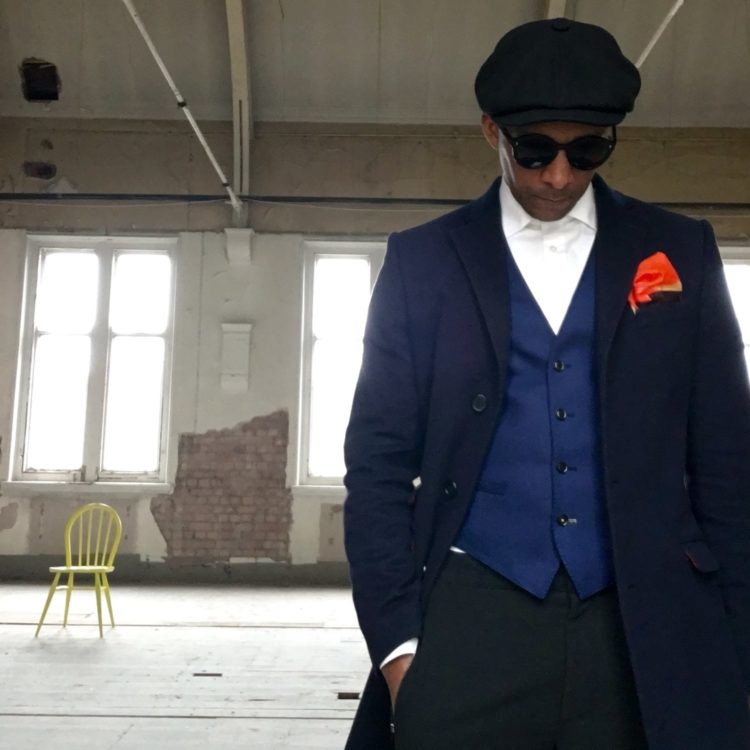
Well obviously we couldn’t do that, but given that it has taken nearly a year to find a diary date that would work we weren’t going to let it slide by without talking to him so Sophie interviewed him via Zoom link for the show. For those of you who don’t know, The Repair Shop started as gentle afternoon television where a group of master restorers would mend broken treasures brought in by the public. It quickly garnered fans including Stephen Fry and Richard Osman and a legion of twitterers all comparing how much they had cried each episode over its tales of forgotten childhood, lost love and missed opportunities. It won a string of awards and has now moved to prime time and Jay, who also presents Money for Nothing as well as running his own upholstery business, has never been busier. And, as a sign of his burgeoning fame he has also appeared on Celebrity Masterchef and House of Games.
But he is still the same relentlessly charming chap he ever was. A sharp dresser with a gold tooth, I first met him in 2013 when he invited me to an evening’s upholstery class to recover a chair that would be auctioned for the charity he was running Out of the Dark. I wrote about that here.
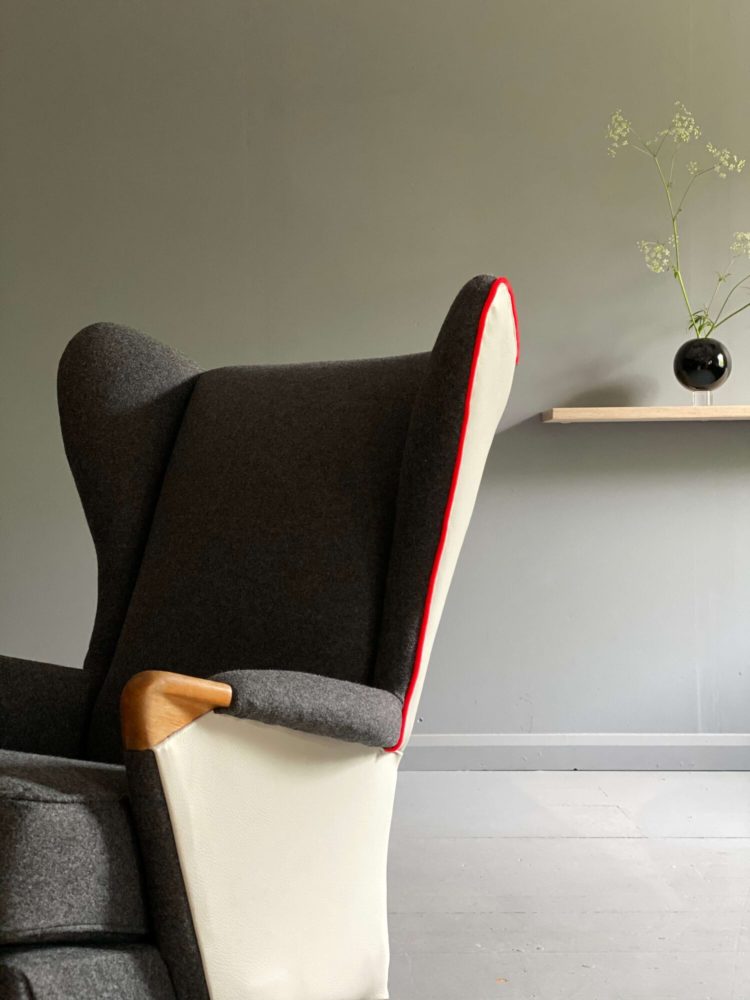
After leaving school at the age of 15 with dyslexia and no qualifications, Blades did a succession of what he calls “little jobs”. The following few paragraphs are from a BBC interview. At the age of 30, Jay decided to go to university. “I wanted to set myself a challenge of doing something that I didn’t like, which was school. I didn’t like school for a number of reasons. I was bullied and there was a lot of racism, and there’s a lot of fighting I had to do at school.”
He phoned a university and asked what courses they had on offer and criminology was suggested. He asked what that was, and was told it’s the study of why people commit crime. He responded: “Really? Wow. I’d like to know why people do crime because my area was full of crime.”
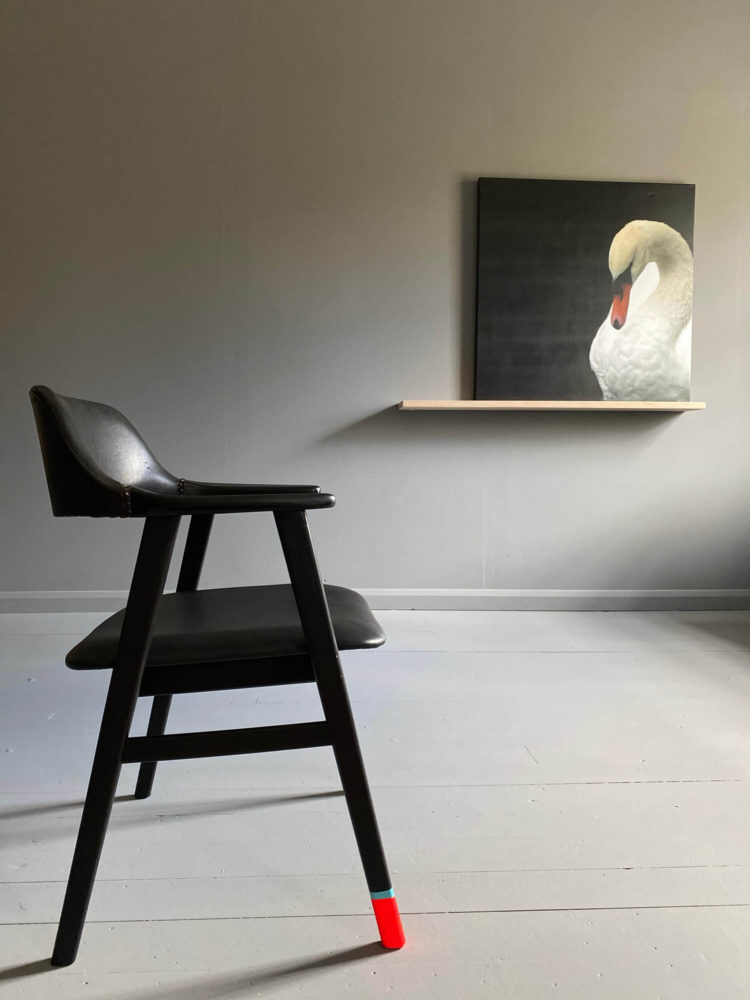
While at university in Buckinghamshire, he took part in race relations training with police – and gave them a piece of his mind. “I was telling them how they’re policing ethnic minorities and they’ve got it all wrong, because they were very heavy-handed. I didn’t know I was chatting to the chief superintendent of Thames Valley Police and he said to me, ‘I admire your bravery. No-one’s ever told me about this the way that you told me.'”
As a result he was commissioned to survey young people in deprived areas in Oxford about their concerns, and feed the responses back. He then did the same in other nearby towns. That led to the formation of Out of the Dark (with his ex-wife). He then put out a call for local retired people who wanted to pass on their skills and was taught to re-cane a chair by a 91-year-old.
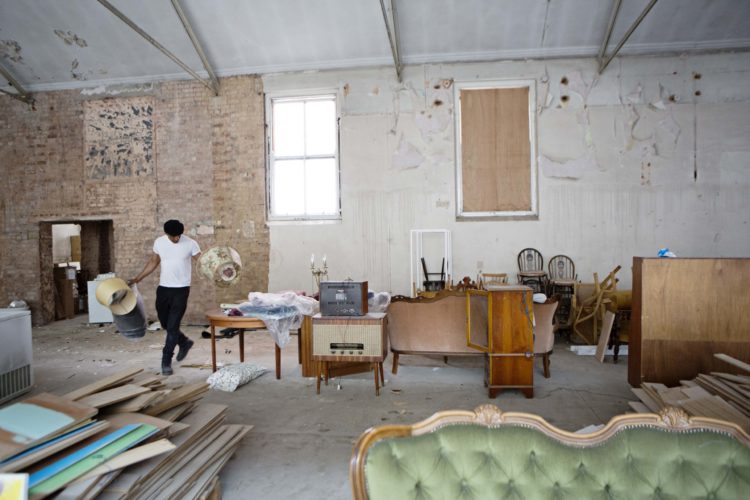
He began teaching young people how to transform objects they had dismissed as junk – giving them not only practical skills but also lessons about waste and finance.
This is what he was doing when I first met him back in 2013. And back when he could still find Ercol furniture in skips and being thrown out of people’s houses. He was quick to work out his distinctive style which mostly came about, he says on the podcast, because of mistakes.
“I started painting a chair and the phone rang and I was looking at the chair and really liked that one leg was different,” he says.
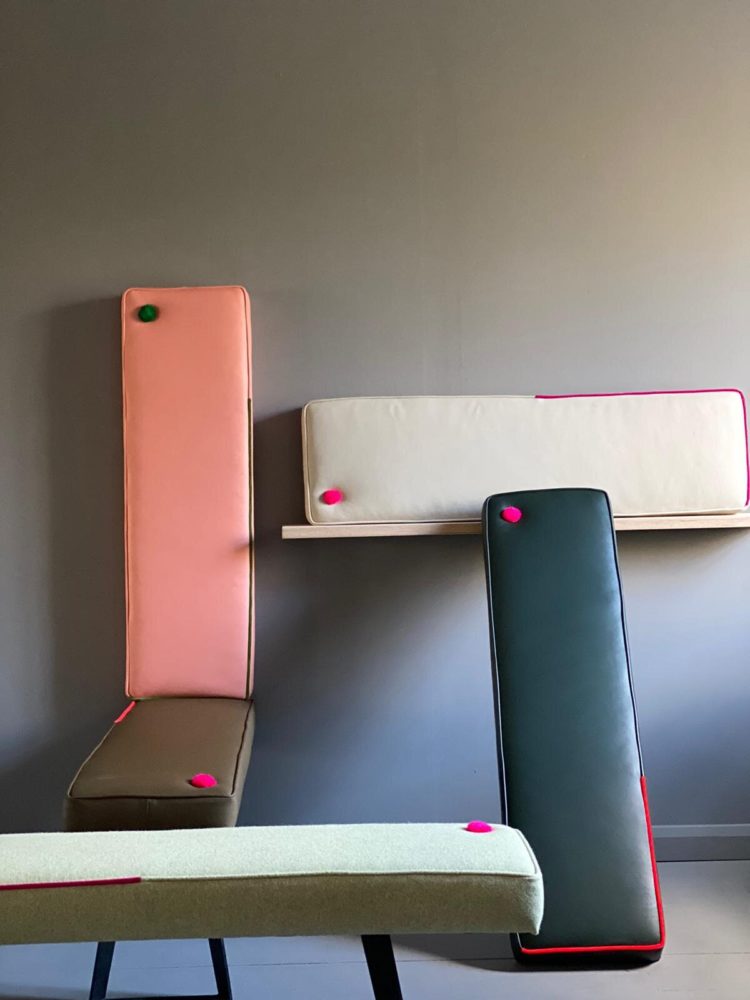
“The dripping paint effect came about when I left some paint and it fell over and dripped and it reminded me of being a child and having ice cream running down my hands as it melted. Or the single button effect – again because the phone would ring when I was in the middle of sewing them on.
“All of these ideas came from a mistake. It’s not that I’m some design guru; I’ve just made a mistake and then I’ve celebrated it and said do you know what I quite like that. That’s my style. My style has come about by making beautiful mistakes.”
Jay now lives and works in Ironbridge, in Shropshire, where his workshop – seven minutes from his house – is a former school.
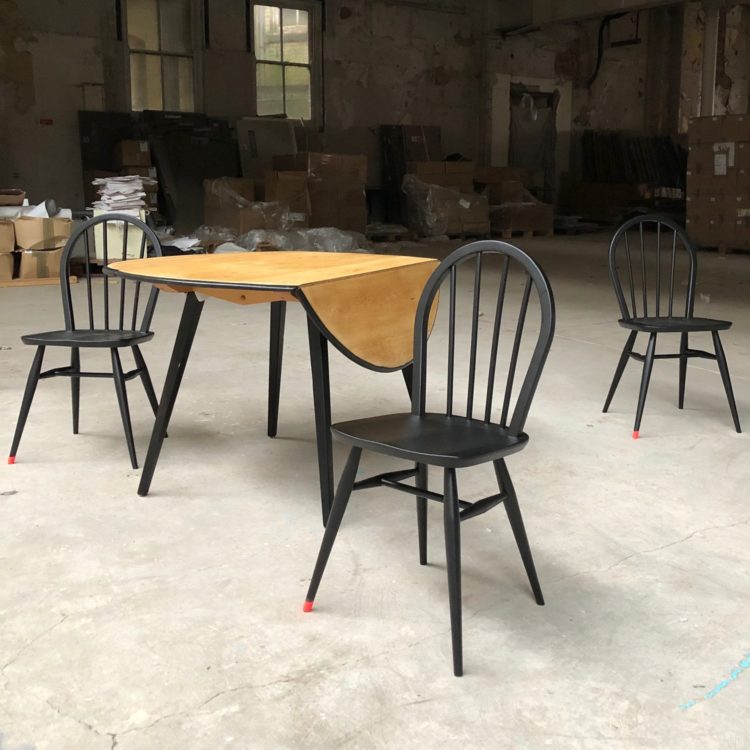
“It’s near the old tile factory and the school was set up for the children of the workers. It’s big so it’s easy to social distance,” he jokes. Although that has been necessary as Jay has been working on a new show which is due to come to our screens at the end of the month.
Filming with just one cameraman, the show will be called Jay’s Home Fix and is about teaching viewers new skills to help them become self sufficient for lockdown. Ideas include making your own dishwasher tablets and furniture polish. Jay’s not giving his tips away but does say that you can use essential oil to scent your own polish – his smell of choice is sweet oranges.
But self-sufficiency aside, Jay also talks of the therapeutic effect of making do and mending. “I feel it every time I complete something… a lifting of the spirits…
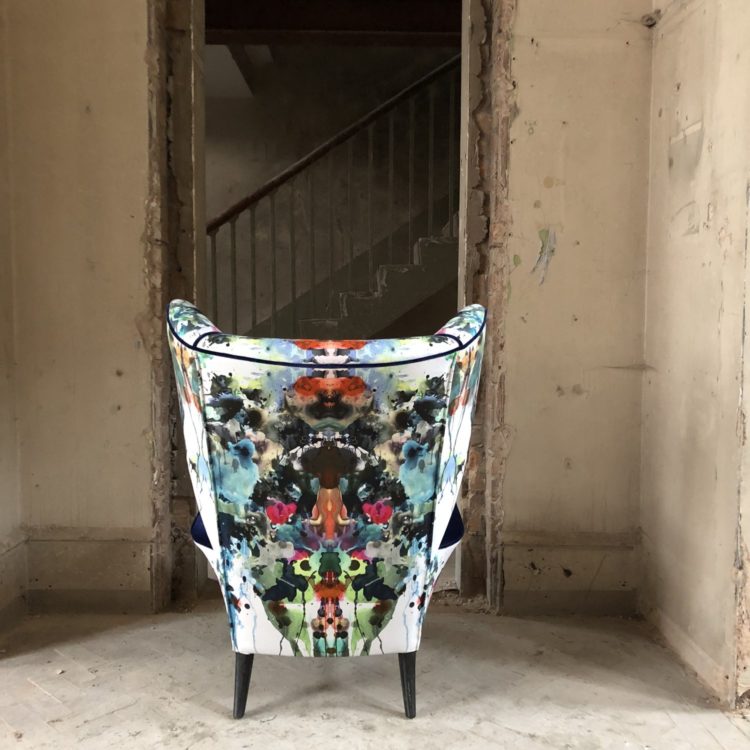
“I was classified as a failure at school. They didn’t identify that I was dyslexic but every time I paint or sand or put a piece of fabric onto a chair there is a sense of achievement that supports my mental health. It’s almost as if that fabric, that paint is giving me a pat on the back. It’s giving me the encouragement to keep on going. I’ve got the know how to make me feel better. And it’s by doing up old furniture.”
Jay calls himself a selfish designer because he designs for himself returning again and again to the same fabrics and colours and reinventing them for each piece of furniture.
But he is also generous as he is happy to share his tips if you want to try your own hand at reupholstering a chair. At junk shops and car boot sales look for stuff made from solid timber.
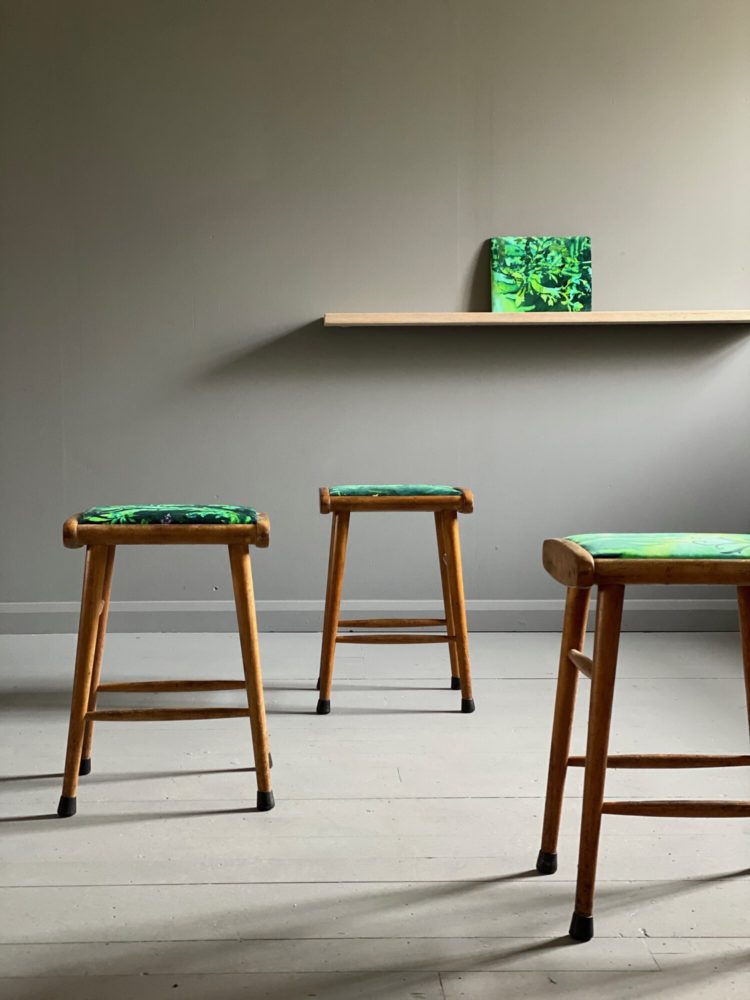
“Someone chopped down a tree for that so it deserves to be mended. Anything from the 1920s to the 1970s will be good quality and made from wood. I love the British brands – Ercol, G-Plan, Gordon Russell – but they are currently fashionable and will be expensive.
“Look for dining chairs with a drop in seat as you can remove that and recover it and drop it back in again. Start with something simple to avoid disappointment. And use a fabric remnant or even an old pillowcase.
“Just have a go. Be brave.”
And that seems like good advice for life not just upholstery. Below is a clip of Jay from the podcast to give you a flavour of it.
And this is a trailer for the show itself if you haven’t listened before and aren’t, generally speaking, a listener of podcasts.
With huge thanks to our sponsor Geberit for supporting the podcast so enthusiastically during this difficult period. Elsewhere on the show Sophie and I discuss our fantasy houses – we’re over lockdown we want to talk design dreams – and some simple ideas for revamping your space. Special thanks also to Kate Taylor, whose company Feast Collective Production Network, produces the show for us with huge skill and patience in the face of my fury at the tech.






Very interesting. Therapeutic effect of fixing and mending. Making do. All very important right now.
Jay sounds like a total inspiration-thank you for writing this piece Kate. It so great to celebrate such positive and inspiring people . I look forward to the podcast